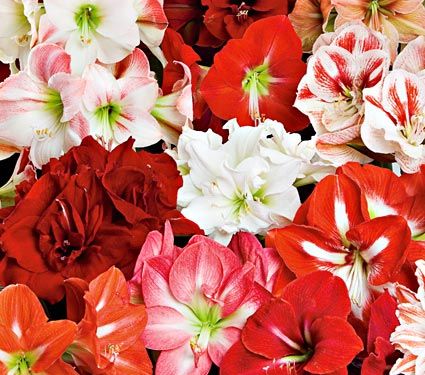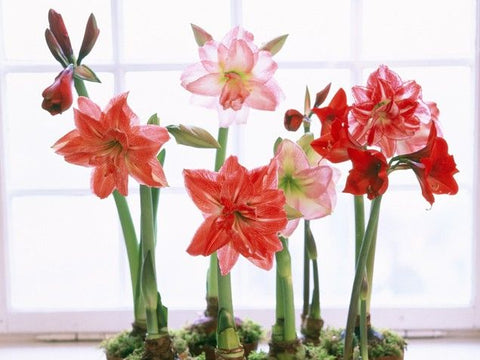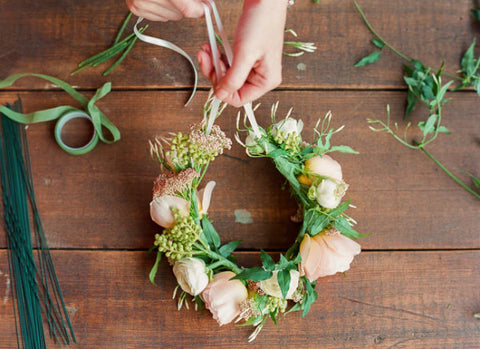
Poinsettia History
In order to fully understand or appreciate this plant, it is helpful to take a look at where did the poinsettia come from. The poinsettia is native to Central America, near southern Mexico. It was introduced to the U.S. in 1828 and got its name from Joel Roberts Poinsett. Poinsett was the first U.S. Ambassador to Mexico with a passion for botany. Upon discovering this shrub, he became so enchanted with its bright red blooms that he sent several plants back to his home in Greenville, S.C. in 1825 The poinsettia is not a poisonous plant. Research has proven that the poinsettia is not lethal to humans or pets unless eaten in extremely large amounts. However, your poinsettia and all other houseplants should be kept out of the reach of small children and pets, since varying degrees of discomfort may be experienced if plant parts are ingested. The poinsettia, a member of the Euphorbia family, and is the number 1 potted plant sold in the United States. And, that’s over a very small 6 week window! National Poinsettia Day is celebrated on December 12.

Taking Care of your Poinsettia
With proper care, your poinsettia will last through the holiday season and right into late winter. Play close attention to the following tips:
• Place in a room where there is bright natural light but not where the sun will shine directly on the plant.
• Keep the plant away from locations where it will receive hot or cold draughts.
• Place the plant high enough to be out of reach of unmonitored children and pets.
• Set the plant in a water-proof container to protect your furniture.
• Water the plant thoroughly when the soil surface is dry to the touch. Discard any excess water which remains in the saucer after 10 minutes.
• The bright color of the bracts will remain longer if temperatures do not exceed 22°C.
Re-flowering Your Poinsettia If you cannot bear to throw your poinsettia out when it is finished providing color, you may want to try your hand at re-flowering your poinsettia next year.
December
-Full bloom.
-Water as needed.
April
-Color fades.
-Keep near sunny window and fertilize when new growth appears.
-Cut back stems to about 20 cm.
June
-Repot if necessary.
-Fertilize with a balanced formula 20-20-20.
-Continue to water when dry to touch.
-Move outside if temperatures do not fall below 10°C.
-Place in light shade.
Late August
-Take inside.
-Cut stems back, leaving three or four leaves per shoot.
-Sunny window.
-Water and fertilize as needed.
Sept. 20 'til December 1
-Keep in light only from 8 a.m. to 5 p.m.
-Put in dark (NO LIGHTS) 5 p.m. to 8 a.m.

Remember the key to success: Follow the strict light/dark instructions carefully.
What Makes Poinsettias Turn Red?
Many people wonder what makes poinsettias turn red. It is actually the plant’s leaves that provide its color through a process called photoperiodism. This process, in response to certain amounts of light or lack thereof, turns the leaves from green to red (or pink, white, and other shade variations). What most people mistake as flowers in fact specialized leaves, or bracts. The small yellow flowers are found in the center of the leaf branches.
Many people wonder what makes poinsettias turn red. It is actually the plant’s leaves that provide its color through a process called photoperiodism. This process, in response to certain amounts of light or lack thereof, turns the leaves from green to red (or pink, white, and other shade variations). What most people mistake as flowers in fact specialized leaves, or bracts. The small yellow flowers are found in the center of the leaf branches.
How to Make Poinsettia’s Turn Red
In order to get a poinsettia plant to turn red, you need to eliminate its light. Flower formation is actually triggered by periods of darkness. During the day, poinsettia plants require as much bright light as possible in order to absorb enough energy for color production. At night, however, poinsettia plants must not receive any light for at least 12 hours. Therefore, it may be necessary to place plants in a dark closet or cover with cardboard boxes.
In order to get a poinsettia plant to turn red, you need to eliminate its light. Flower formation is actually triggered by periods of darkness. During the day, poinsettia plants require as much bright light as possible in order to absorb enough energy for color production. At night, however, poinsettia plants must not receive any light for at least 12 hours. Therefore, it may be necessary to place plants in a dark closet or cover with cardboard boxes.
Leaves
It’s important to pinpoint the possible cause in the event that your poinsettia plant leaves are falling off, as in some cases, this can be easily fixed. Environmental factors, such as warm, dry conditions, are most often the reason for leaf drop. Stress can also be a factor. Keep the plant in a cool, draft-free area and provide plenty of water. If all else fails, the plant may need to be discarded. Now that you know how to you take care of poinsettias you can keep these lovely plants year round. With proper poinsettia plant care, they will give you many years of beauty.
It’s important to pinpoint the possible cause in the event that your poinsettia plant leaves are falling off, as in some cases, this can be easily fixed. Environmental factors, such as warm, dry conditions, are most often the reason for leaf drop. Stress can also be a factor. Keep the plant in a cool, draft-free area and provide plenty of water. If all else fails, the plant may need to be discarded. Now that you know how to you take care of poinsettias you can keep these lovely plants year round. With proper poinsettia plant care, they will give you many years of beauty.

Poinsettia Facts
-Poinsettias are native to southern Mexico and Guatemala, where they are a perennial shrub that can grow as large as 10 feet tall.
-The Aztecs called the poinsettia Cuetlayochitl.
-Poinsettias are part of the Euphorbiaceae family. Many plants in this family ooze a milky sap.
-Most people think the showy colored leaves of the poinsettia are the flowers, but are actually colored bracts. The flowers or cyathia of the poinsettia are in the center of the colorful bracts.
-Poinsettias are not poisonous. However, it is not intended for human and animal consumption.
-By an Act of Congress, December 12th was set aside as National Poinsettia Day. The date marks the death in 1851 of Joel Roberts Poinsett, who is credited with introducing the native Mexican plant to the United States.
-There are over 100 varieties of poinsettias available.
-Seventy-four percent of Americans still prefer red poinsettias.
-Poinsettias are the best selling potted plant in the United States.
Order a lovely Poinsettia plant today for your home or office!



























